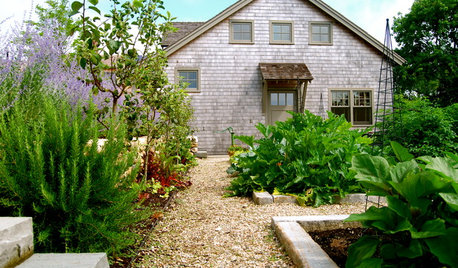'Homemade,' Inexpensive Tests to Determine Soil Type, Drainage
azmountains_gardener
13 years ago
Related Stories

GARDENING GUIDESGardening Solutions for Heavy Clay Soils
What’s a gardener to do with soil that’s easily compacted and has poor drainage? Find out here
Full Story
GARDENING GUIDESThe Poop Scoop: Enrich Your Soil With Good Old Manure
Get over the ick factor already — this natural super-ingredient for soil has so many benefits, you'll wonder why you ever went chemical
Full Story
FARM YOUR YARDHow to Get Good Soil for Your Edible Garden
The nutrients in your soil feed the plants that feed you. Here are tips on getting it right — just in time for planting season
Full Story
GARDENING GUIDESGardening Solutions for Dry, Sandy Soils
Has your desert or beachy site withered your gardening creativity? Try these ideas for a beautiful, easy-care landscape
Full Story
GARDENING GUIDESGet the Dirt on Your Garden’s Soil
Understand how your soil supports your plants so you can ensure your garden’s success
Full Story
GARDENING GUIDESHow to Stop Worrying and Start Loving Clay Soil
Clay has many more benefits than you might imagine
Full Story
GARDENING GUIDESThe Simple Secret to Gardening Success
Learn the kinds of soil and a DIY type test to make sure you’re putting the right plant in the right place
Full Story
GARDENING GUIDESGet on a Composting Kick (Hello, Free Fertilizer!)
Quit shelling out for pricey substitutes that aren’t even as good. Here’s how to give your soil the best while lightening your trash load
Full Story
GARDENING GUIDESGarden Myths to Debunk as You Dig This Fall and Rest Over Winter
Termites hate wood mulch, don’t amend soil for trees, avoid gravel in planters — and more nuggets of garden wisdom
Full Story
CONTAINER GARDENSContainer Garden Basics: How and When to Water Potted Plants
Confused about soil moisture, the best time to water and what watering device to use? This guide can help
Full Story






homertherat
Kimmsr
Related Professionals
Manorville Landscape Architects & Landscape Designers · Tomball Landscape Architects & Landscape Designers · Allentown Landscape Contractors · Berkley Landscape Contractors · Berwyn Landscape Contractors · Commack Landscape Contractors · Firestone Landscape Contractors · Glendale Heights Landscape Contractors · Hilton Head Island Landscape Contractors · Parker Landscape Contractors · West Chester Landscape Contractors · Shenandoah Landscape Contractors · Boston Decks, Patios & Outdoor Enclosures · Fort Worth Decks, Patios & Outdoor Enclosures · Jackson Decks, Patios & Outdoor Enclosuresblameitontherain
berryman135678
piedmontnc
azmountains_gardenerOriginal Author
Kimmsr
Lloyd
piedmontnc
piedmontnc
azmountains_gardenerOriginal Author
piedmontnc
homertherat
piedmontnc
Lloyd
Kimmsr
piedmontnc
Lloyd
buford
Lloyd
piedmontnc
azmountains_gardenerOriginal Author
rott
buford
rott
Kimmsr
piedmontnc
piedmontnc
tsugajunkie z5 SE WI ♱
piedmontnc